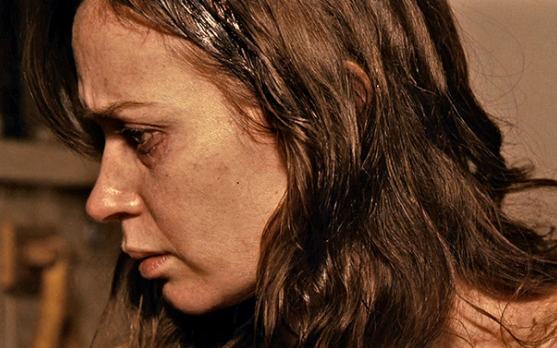As Hillary Clinton gets ever closer to winning the presidency, it’s only natural that the trend in the female vengeance genre would continue to prosper. The Girl on the Train is the latest commercial cinematic example of this, on the heels of Gone Girl, directed by David Fincher, in 2014.
Not only do the two narratives share similarities in terms of empowered women taking control over a situation in which a man had previously wronged them over and over again, but also with regard to the fact that each one is based on a bestselling novel written by a woman. Where the styles differ is in the extremism of the heroine and the lengths she’s willing to go to regain autonomy in her life.
Maybe it has to do with Rosamund Pike’s interpretation of Amy Elliott Dunne being more adept at playing the cold, calculated anti-heroine in possession of the undercutting ability to manipulate with more grandeur than a dictator that makes Emily Blunt’s mousy, callowly alcoholic Rachel Watson come off as so much less of a force to be reckoned with.
The novel, adapted into a screenplay by Erin Cressida Wilson (who is usually known for more innovative work, including Secretary and Fur: An Imaginary Portrait of Diane Arbus), was already deemed “the next Gone Girl” upon its release in 2015–which essentially set it up for immediate optioning to Hollywood, and explains how it came to be in theaters as a film so soon after the book’s debut. The expediency with which the movie was shot is, indeed, a testament to how much more clearly major production companies like DreamWorks are realizing the importance of creating more “depraved” features that tell the flipside of why a woman acts that part of “the crazy bitch.” And, more often than not, yes, it’s because a man made her that way. But this very narrow view of why a woman is driven to madness is limited in scope, and, of course, probably more than slightly sexist. After all, movies about men rarely focus on his quest for exacting revenge on a woman who drove him mad and/or did him wrong (unless you count Le Dos Au Mur). Thus, the true next step in femalecentric cinema (and ergo “literature,” if you can call anything on a bestseller list that) would be to write it from a standpoint that doesn’t so heavily focus on a woman’s need to claim retribution. Established by the American remake of The Girl With the Dragon Tattoo in 2011, the popularity of this theme–women killing men who have fucked them over–is bound to become a little tired without a new angle. Or at least a more graphic and visceral murder scene (one that, incidentally, The Girl on the Train does not deliver).
Even where Rachel’s addiction is concerned, a missed opportunity for dauntlessness occurs. Rather than make her pathetic and incoherent, why not turn her lust for alcohol into a source of valor?–an unapologetic flaw she uses to declare, “Yeah, I’m a psycho who rides the train every day to nowhere.” At least with female vengeance movies past, there was more spunk–not sperm-wise, mind you–(i.e. The First Wives Club) and less cowardice involved.
What it really comes down, it seems, is that it, unfortunately, often takes a man’s rendering of a woman’s lust for vindication to give her the edge she deserves (see: The Bride Wore Black, Kill Bill Vol. 1, Kill Bill Vol. 2 and Death Proof). And, frequently, the same goes for comic book characters adapted for the silver screen as well.
With all of this being said, it might be time for a different approach to a genre that has become evermore bankable at the box office. A bit of advice: if one wants to cultivate any shock value, it might be best to turn to Japanese and South Korean cinema for inspiration on the audience-titillation front.






















